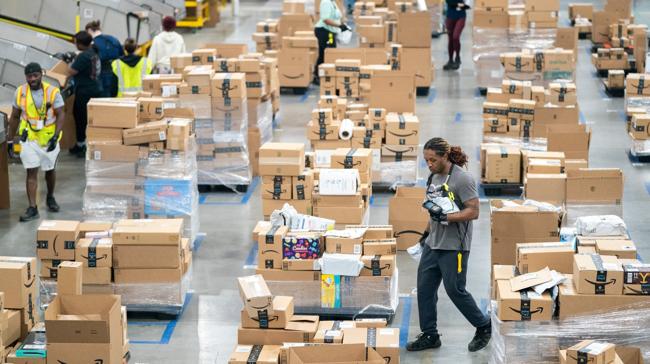Summary
Yet the president has slapped 25% duties on steel and aluminum, as well as cars, and a 10% tariff on nearly all other imports. And China, the United States third-largest trading partner, now faces a 145% duty on its exports.
Source: The Baltimore Sun

AI News Q&A (Free Content)
Q1: How did the US inflation rate change from 2021 to 2023, and what were the contributing factors?
A1: The US inflation rate surged between mid-2021 and mid-2022, reaching the highest levels since 1981. Contributing factors included the COVID-19 pandemic, supply chain disruptions, fiscal and monetary stimulus, and the Russian invasion of Ukraine, which affected global oil prices. By 2023, inflation rates had sharply declined as central banks, except for the Bank of Japan, aggressively increased interest rates. Despite the decline, economists speculate that consumer prices may remain elevated, with a return to pre-pandemic levels unlikely without a deflationary period.
Q2: What impact have US tariffs on steel and aluminum had on inflation and consumer spending?
A2: US tariffs on steel and aluminum, initially set at 25%, contributed to higher production costs in industries relying on these materials, indirectly impacting inflation. The tariffs led to increased prices for consumer goods, as manufacturers passed on the additional costs to consumers. Despite this, consumer spending remained robust, partly due to pent-up demand following the easing of pandemic restrictions. However, the tariffs have also strained international trade relations, particularly with China, which faces significant duties on its exports.
Q3: What are the economic implications of the US-China trade war and the 145% tariffs imposed on Chinese goods?
A3: The US-China trade war, characterized by tariffs as high as 145% on Chinese goods, has led to a significant reduction in trade between the two countries. This has disrupted global supply chains, increased costs for American consumers and businesses, and contributed to inflationary pressures. The tariffs have also prompted China to impose retaliatory measures, further straining economic relations. The ongoing conflict has highlighted the challenges of using tariffs as a tool for achieving trade policy objectives without harming domestic economies.
Q4: How have exporters adapted to increased US tariffs, according to recent scholarly research?
A4: Recent research indicates that exporters have adapted to increased US tariffs by substituting products from countries unaffected by the tariffs and shifting to varieties not subject to tariffs. This strategy, observed in Spanish exporters affected by the Airbus-Boeing conflict tariffs, allowed them to maintain export revenues in the US. The findings suggest that tariff avoidance is a viable strategy for mitigating the impact of tariff hikes on international trade.
Q5: What were the outcomes of the proposed US reciprocal tariffs on coffee, and how did they affect consumer prices?
A5: The proposed US reciprocal tariffs on coffee, analyzed through economic theories and simulation models, projected significant substitution effects. The tariffs were expected to shift US import demand away from high-tariff origins towards lower-tariff competitors, potentially increasing coffee prices for American consumers. This disruption, framed within political economy considerations, demonstrated the broader systemic impacts of strategic trade policies on consumer prices and international trade dynamics.
Q6: How has the concept of vertical integration been affected by import competition and tariff changes, particularly for Chinese firms?
A6: Research on Chinese firms indicates that import competition and tariff changes have influenced their production organization choices, leading to increased vertical integration. Decreases in downstream tariffs encouraged firms to integrate vertically, especially in high-tech industries with high asset specificity. This trend suggests that tariff reductions can drive domestic firms to optimize production for technological acquisition and competitiveness in the global market.
Q7: What strategies have been proposed to mitigate the impact of tariffs on consumer spending and inflation?
A7: One proposed strategy to mitigate the impact of tariffs on consumer spending and inflation is the diversification of supply chains to reduce reliance on high-tariff countries. Additionally, policy measures such as targeted fiscal support and monetary interventions can help cushion the economic impact on consumers. Encouraging domestic production and innovation can also provide long-term solutions by reducing dependency on imports and enhancing economic resilience against trade disruptions.
References:
- 2021–2023 inflation surge
- Inflation
- China–United States trade war
- How exporters neutralized an increase in tariffs, Asier Minondo
- Brewing Discontent: How U.S. Reciprocal Tariffs on Coffee Could Echo the Boston Tea Party, Muhammad Sukri Bin Ramli
- Import competition and domestic vertical integration: Theory and Evidence from Chinese firms, Xin Du, Xiaoxia Shi





